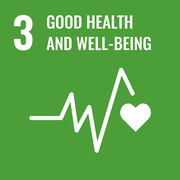
COVID-19 vaccine-induced thrombosis: the enzyme behind the complication
The thrombotic complications associated with the anti-COVID vaccine, which were very serious in some patients, were a cause of serious social concern, especially in the early stages of the vaccination campaign.
An Italian team, led by Francesco Violi from Sapienza University of Rome, in collaboration with Carnevale, Pignatelli and D'Amati from the same university and other researchers from the University of Florence and Terni Hospital, has identified the mechanism behind the thrombosis that occurred in some patients after taking the Astra Zeneca vaccine.
This reaction occurred mainly in young women under the age of 55, about 15 days after the first vaccine dose and was fortunately relatively rare, with a frequency of 1:100,000 cases.
In the study published in the journal Arteriosclerosis, Thrombosis and Vascular Biology, the official journal of the American Society of Cardiology, the authors showed that the antibodies formed in some patients attack not only platelets but also leucocytes by causing the release of an enzyme, called Cathepsin G, which in turn binds to the platelet receptor causing them to aggregate.
'This,' says Violi, 'is an amplification mechanism of the autoimmune process that can only explain the prevalence of thrombosis in venous districts, since leucocytes do not only activate platelets but also the entire coagulation system'.
The researchers analysed blood samples from 30 patients: 10 of these had post-vaccine thrombosis and the others had cerebral thrombosis or venous thrombosis unrelated to the vaccine. This showed that the enzyme is also activated, albeit to a lesser extent, in classic thrombosis occurring in atherosclerotic patients.
This discovery," adds Violi, "not only opens up new perspectives for understanding how thrombosis occurs in humans, highlighting the crucial role of the leucocyte-mediated inflammatory process, but will also help in the development of new drugs for the treatment of myocardial infarction and stroke. Drugs that inhibit the interaction between cathepsin G and platelets could be a new route compared to current antithrombotic drugs.
References:
PAD4-Induced NETosis Via Cathepsin G-Mediated Platelet-Neutrophil Interaction in ChAdOx1 Vaccine-Induced Thrombosis-Brief Report – Carnevale R, Leopizzi M, Dominici M, d'Amati G, Bartimoccia S, Nocella C, Cammisotto V, D'Amico A, Castellani V, Baratta F, Bertelli A, Arrivi A, Toni D, De Michele M, Pignatelli P, Marcucci R, Violi F - Arterioscler Thromb Vasc Biol 2023 doi: 10.1161/ATVBAHA.123.319522.
Further Information
Francesco Violi
Department of Internal Medicine and Medical Specialties Sapienza University of Rome
francesco.violi@uniroma1.it
